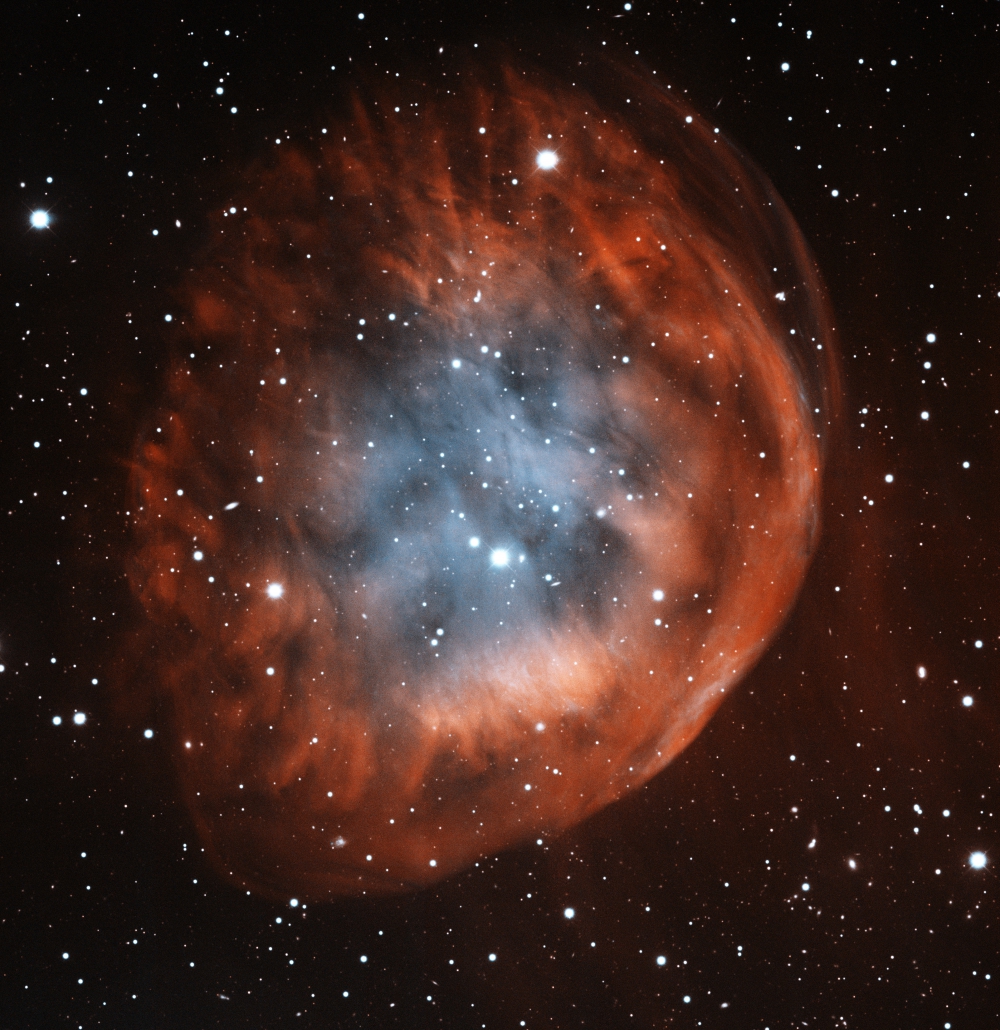A star is born

ANU ScienceWise Magazine - Spring 2011
On casually glancing into the night sky, you couldn’t help but notice that some stars are very much brighter than others. Sometimes this is because faint stars are much further away than bright ones but to a very large extent it’s because stars really do vary greatly in their intrinsic brightness.
When it comes to stellar brightness, mass and age are the most important factors. All stars form from a gravitational accumulation of diffuse dust and gasses, principally hydrogen, that occupy regions of interstellar space. How much material is available will ultimately dictate not only the star’s brightness but its ultimate fate.
You might imagine that a very big star would live a very long time because it has large reserves of hydrogen fuel to drive the nuclear fusion reactions in its core. But surprisingly, the direct opposite is true. Massive stars burn very bright but for a very short time whilst small stars such as red dwarves, burn for a very, very long time indeed – tens of billions of years.
Red dwarves are particularly interesting to astronomers because they comprise the vast majority of the stars in the universe. However their low intrinsic brightness makes all but the closest ones quite challenging to study. For that reason there was great excitement in the astronomy community when an international team, including Simon Murphy, a final-year PhD student from the ANU Research School of Astronomy and Astrophysics, discovered a red dwarf that is not only close to Earth, but is also very young in stellar terms. Known as AP Columbae, this star is a mere 40 million years old.
“This is a really exciting opportunity not only to study a red dwarf at close quarters, but to study one around which young planets will most likely be forming.” Simon says, “And because the system is so young, the planets should still be very hot and therefore bright which really increases our chances of directly imaging them.”
But how exactly does one go about ascertaining the age of a star? “One of the key indicators is lithium,” Simon explains, “Lithium is destroyed quite quickly in red dwarf stars so when we see a strong lithium signature in the spectrum we can be pretty sure the star is less than100 million years old.
Another clue comes from the pressures in the stellar atmosphere. Very young stars are still in the process of gravitational collapse. They haven’t reached an equilibrium point where the pressure of radiation from the core balances the contraction caused by their own massive weight. The spectral signature of elements such as sodium is highly sensitive to pressure so the nature of the sodium lines can yield clues to the pressure gradient in the star and hence it’s age.
A careful study of the spectrum of AP Columbae using the newly commissioned WIFeS spectrometer, designed and built at ANU and fitted to the 2.3m telescope at Siding Spring, NSW enabled Simon to tie down the star’s age - 40 million years. “Early in their lives these stars are prone to violent flares and eruptions. This one’s not quite a baby, more of a toddler. And just like human toddlers, young stars are prone to tantrums,” Simon says.
Quite apart from the flares, the planetary system would be far too young and hot for life to have evolved there, but it should give astronomers vital clues into what kind of planets might be expected in orbit around the universe’s most common star type. And by sheer weight of probability, a red dwarf system may well house our nearest living neighbours in the universe.
